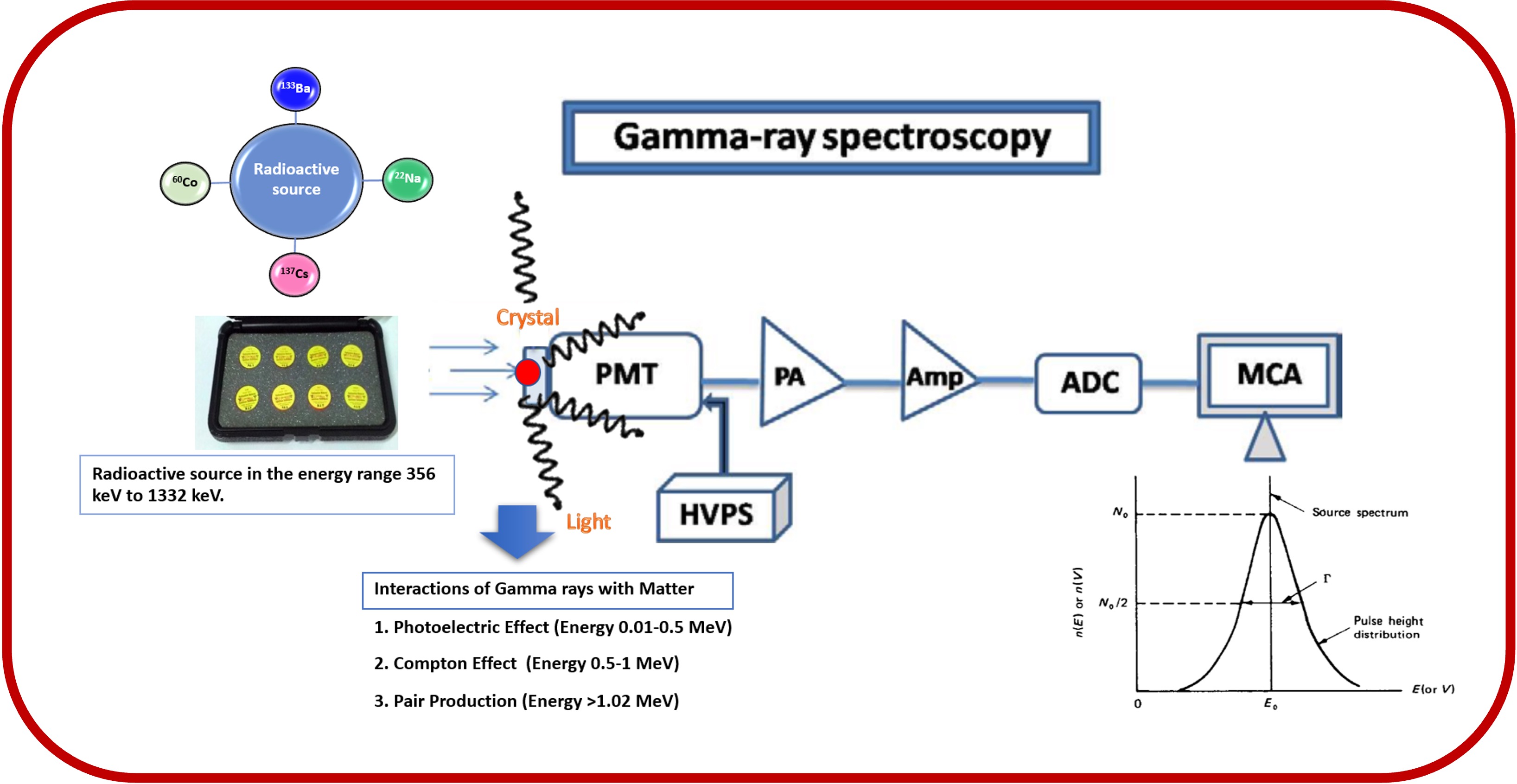Energy resolution, peak to total ratio, peak to Compton ratio of cerium bromide crystal scintillator
Main Article Content
Abstract
Background: CeBr3 Inorganic scintillator is a favorite scintillator in various fields, especially in medical imaging and X-rays/gamma rays detectors. One is important before being applied in any application is the fundamental properties that it has to measure such as energy resolution, PTR, PCR, and light yield.
Objectives: In this research, a CeBr3 crystal was carried out trial for calculating the energy resolution, peak to total (PTR), and peak to Compton (PCR) values.
Materials and methods: When high photon energy undergoes with the CeBr3 crystal, the crystal will occur to interact with photon energy by energy’s absorptions via the interaction ternary as the photoelectric absorption, Compton scattering, and pair production. The nuclear instrument module (NIM) was used in this experiment. The crystal will generate light and come into a photomultiplier tube (PMT 9256 KB) for amplifying the light signal via the radiation sources as Ba-133, Na-22, Cs-137, and Co-60, which generated the energies at 0.356 MeV, 0.511 MeV, 0.662 MeV, 1.173 MeV, and 1.332 MeV, respectively.
Results: The result found that the energy resolution of CeBr3 showed the energy resolution of CeBr3 crystal showed a linear pattern of inverse the square root of the energy and found the energy resolution values were increased when the photon energy decreased. The PTR and PCR values decreased with increasing energy ranges via experiment of each full energy peak of radiation sources.
Conclusion: From the fundamental properties of CeBr3 crystal showed a good energy resolution and is a possible candidate to apply for any application such as radiation detection and high-energy physics. Anywise, other properties should be also considered, for example, light yield, decay time, and nonproportionality of light yield.
Article Details

This work is licensed under a Creative Commons Attribution-NonCommercial-NoDerivatives 4.0 International License.
Personal views expressed by the contributors in their articles are not necessarily those of the Journal of Associated Medical Sciences, Faculty of Associated Medical Sciences, Chiang Mai University.
References
Verma R, Jain GK, Chougule A. Implementation of safety and security standards for high dose rate brachytherapy sealed radioactive source used in a medical radiation facility. Radiat Med Prot [Internet]. 2020; 1: 166-70. doi.org/10.1016/j.radmp.2020.11.004.
Townsend DW. Positron Emission Tomography/Computed Tomography. Semin Nucl Med. 2008; 38: 152-166. doi: 10.1053/j.semnuclmed.2008.01.003.
Krause P, Rogers E, Birowosuto MD, et al. Design rules for Time of Flight Positron Emission Tomography (ToF-PET) heterostructure radiation detectors. Heliyon. 2022; 8: e09754. doi.org/10.1016/j.heliyon. 2022.e09754.
Hosoda M, Iwaoka K, Tokonami S, et al. Comparative Study of Performance using Five Different Gamma-ray Spectrometers for Thyroid Monitoring under Nuclear Emergency Situations. Health Phys. 2019; 116: 81-7. doi: 10.1097/HP.0000000000000954.
Tambe V, Kathar U, Raval N, et al. Positron emission tomography as a noninvasive tool in pharmacokinetic studies [Internet]. Biopharm. Pharmacokinet. Considerations Vol. 1 Adv. Pharm. Prod. Dev. Res. INC; 2021. doi.org/10.1016/B978-0-12-814425-1.00013-9.
Tsoulfanidis N. and Landsberger S. MEASUREMENT and DETECTION of RADIATION. 4th Ed. CRC Press is an imprint of Taylor & Francis Group, an Informa business; 2015: 273-283.
Limkitjaroenporn P, Hongtong W, Kim HJ, et al. PTR, PCR and Energy Resolution Study of GAGG: Ce Scintillator. J Phys Conf Ser. 2018; 970. doi: 10.1088/1742-6596/970/1/012016.


